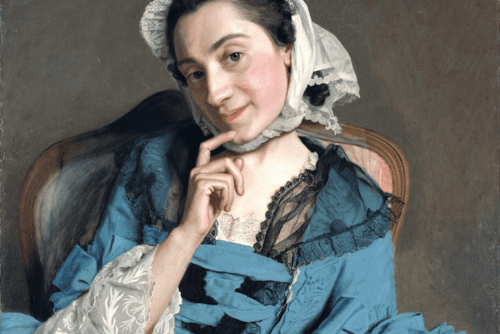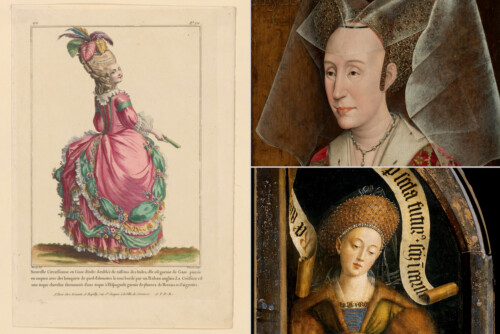Luther on Women’s Agency
Soon after Schütz Zell published her apologia, Luther sent her a letter, rejoicing that “God has so richly given you His grace so that you … personally see and are acquainted with His kingdom, which is concealed from so many people.”1 He expressed his pleasure at Schütz Zell’s marriage, which had taken place a year earlier, and was delighted that she had found a suitable husband “through whom you daily and unceasingly are better able to learn and hear this [of God’s kingdom].”2 This is the first of the two letters that Luther wrote to Schütz Zell that survive in the source material of the Weimarer Ausgabe.3
It is possible that Luther’s goal in his letter was to emphasize the hierarchical power relations between wife and husband, as the notion of husband as teacher and wife as disciple suggests. This interpretation would adhere to his general discussion on women during the early 1520s. He argued that the initial hierarchy between genders was based on Creation, and not solely on Fall, a traditional view apparent especially in his writings based on the first chapters of Genesis.4 Luther crystallized his standpoint in the Sermons on Genesis5 held 1523 to 1524: “Woman has been created purposefully, to be a help to man, not for [the purpose of] pleasure.”6 Man was a sufficient representative of humankind; woman was created, as Luther put it, to be his helpmate in reproduction.7
Luther saw the gender hierarchy as based on Creation, and in his 1520s writings argued that the Fall verified woman’s subservient position.8 Thus, subordination was an essential part of femininity. In, for instance, On Monastic Vows (1521),9 he remarked that corporal obedience was the part of the role of wives, children, servants, and captives.10 In the Sermons on Genesis, Eve, and therefore women as a group, was weaker and simpler than Adam, and therefore men as a group.11 He further emphasized the substantial difference between, and the hierarchy of, the sexes by using a widely known metaphor of the sun and the moon: “The sun cannot say: I want to be the moon, and vice versa, the moon cannot make itself to be the sun.”12 The portrayal of the power relations between women and men was part of how he justified the “natural” universal roles of wife and mother.13
This was not to say that as a created being, woman was of lesser value than man – she was to be honored as God’s good creation, as Luther maintained.14 Even though her abilities were not equal to those of man and she was placed underneath him, God’s action in Genesis proved that she was valuable.15 For example, in his 1522 treatise Estate of Marriage, Luther noted: “Now you see that he [God] calls the woman good and a helper.”16 To Luther, this indicated that woman was pleasing in God’s eyes, and not to be disregarded, and with this stance he questioned the thinking of many of his misogynistic male contemporaries.17 In sum, Luther was keen to defend the value of women but, in general, not to question the gender hierarchies of his day.
Luther also used phrasing that seems to exclude gender hierarchy and enable women’s agency. In On Monastic Vows, in a Pauline way similar to that used by Schütz Zell, he argues that there are no distinctions between men and women: “It is not a virgin or a chaste which will be saved, but a Christian. Moreover, in Christ there is no male or female, no virgin or wife, or similar [kind of distinctions], but one faith, one baptism, one Lord.”18 The passage is, however, best understood to refer to gender equality in terms of salvation after death, not in terms of life before it. Hence, Luther considered women and men equal in salvation, not otherwise. This was a rather common view: male-dominated tradition as well as many of Luther’s contemporaries also held that gender hierarchy was a part of this life, not that after death.19
Schütz Zell met the evangelicals’ expectations in terms of marrying and thus adopting her proper role under the guardianship of her husband. In general, marrying was increasingly held as a proof of a confessional identity among the evangelicals.20 It is probable that it was not Schütz Zell’s marriage that inspired Luther to write to her – after all, she had wed a year earlier. But her apologia had been published not long before he wrote to her. Elsie McKee argues that the letter was Luther’s response to a letter from Schütz Zell in which she enclosed her published apologia.21 It is indeed possible that receiving a copy of that apologia elicited Luther’s personal response.
Even though Luther expressly praised Schütz Zell’s marriage in his letter, he also reveals his attitude towards her writing. Schütz Zell was, as Kirsi Stjerna notes, influenced by a variety of evangelical characters, yet “particularly devoted to Luther’s theology.”22 It is possible that by writing to Schütz Zell, Luther aimed to strengthen her devotion towards him. On the basis of this notion, as well as the timing and the tone of the letter, I tend to regard Luther as a supporter of Schütz Zell’s public agency. Of course, the lack of disapproval concerning her public writing and the lack of prohibition to write in the future also strongly supports the view that Luther recognized her agency. Furthermore, it is noteworthy that Luther did not write to Schütz Zell’s husband. While there could be a variety of reasons for this, the fact that Luther wrote specifically to Schütz Zell reveals that he saw her as an agent to be taken seriously.
Moreover, Luther’s reference to Schütz Zell as one who knows God’s kingdom was strong encouragement. In aiding the evangelical movement both through her marriage and specifically through her writings, she was an example of a true Christian to Luther. Charlotte Methuen comes to a similar conclusion concerning Luther and Argula von Grumbach, whom Luther esteemed particularly as a “confessor of the faith,” perhaps more so than as a theological thinker.23 Receiving God’s grace and coming to faith – which he did not see as specific to gender – was a theme Luther included in his theoretical writings as well.24
To approve of women’s partaking in societal, ecclesiastical, or political spheres was not a solitary or even a rare act in Luther’s case or among other male thinkers in the late Middle Ages and the early modern era. Women had been persuaded to support church officials, fight heresy, perform as mediators, and influence their husbands, among other things, throughout the centuries.25 Luther seems to have supported women’s right to make choices according to their own conscience in several cases in addition to that of Schütz Zell. For instance, in 1524 he advised three nuns to stay in the convent if they could do it with good conscience; he reckoned they would leave the cloister despite his advice and thus he let them decide for themselves.26 In the same year, he wrote a prologue to a small propagandist treatise by an upper-class nun Florentina von Oberweimar (c.1509–?), who had escaped her convent and justified her actions in writing.27 He wrote a similarly approving prologue in 1528 to a treatise by another upper-class nun, Ursula von Münsterberg (c.1491–c.1534), who also validated in writing her decision to escape from the convent.28 A prime example of Luther’s approval of women’s agency is his relationship with his own wife, Katharina von Bora (1499–1552), whom he married in 1525. Von Bora was active not only in their household, but also, for instance, in ecclesiastical matters – with her husband’s blessing.29
Susan Karant-Nunn and Wiesner-Hanks remark that as a thinker and a writer Luther has to be seen “from the dual perspective of theory and practice.”30 Though he held theoretical viewpoints that, by and large, tended to place women under men’s dominion in every respect, he did not always put them into practice.31 It has to be noted that approving the agency of the women in the examples above served Luther’s own goals – especially in the case of nuns who provided evidence of the godlessness of the cloister. Indeed, as Lyndal Roper points out, Luther could and did use relationships strategically – relationships with women among them.32
Conclusion
An individual contribution to a movement like the Reformation is always the product of several factors, gender and social status high among them.33 Gender became even more of a factor during the sixteenth century.34 For this reason, the issue of women’s agency in the Reformation is complex, and generalizations concerning women’s experience or possibilities are often problematic.35
In this essay, I have shown that Schütz Zell aimed to convince her readers of her right to act as a writer and thus as a public agent. She knew she would be judged, perhaps above all, as a representative of her gender. She anticipated possible criticism by constructing herself as a Christian whose duty it was to act on behalf of fellow Christians. She further justified her writing by noting the circumstances that required her intervention and, more importantly, underlaid her argument with biblical references that supported her personal agency. Not only the rhetoric of her text but also the text itself can be seen as means of Schütz Zell’s self-authorization. On the other hand, Luther, in his theoretical texts aimed mainly at men, tended to stress women’s lack of power. He often emphasizes woman’s proper place under man’s dominion. Yet, he accepted women’s agency outside households to some extent. He also seems to have encouraged Schütz Zell to take on this active role.
The common denominator in the rhetoric of both writers was the notion of God’s approval when justifying Schütz Zell’s agency. Schütz Zell alluded to her status as a tool chosen by God. Luther emphasized that, through grace, God was acting through her. Schütz Zell’s means of self-authorization were common to her and her women contemporaries; their justification for their actions was more broadly based on a historical continuum of women’s self-authorization. The idea of the gift of faith as God’s grace was an important part of Luther’s theological thinking, and because of this, his approval of Schütz Zell’s activity does not contradict his overall understanding of gender. Schütz Zell’s decision to express herself was, as I have demonstrated, an indicator of her own assertion of agency within the evangelical community. Luther’s reaction to Schütz Zell reveals how he himself could maintain, without contradiction, both a position that suppressed women’s agency and a position that encouraged it.
- WA BR 3, no 808, 405–6. [↩]
- Stjerna, Women, 112; WA BR 3, no. 808, 406, trans. Susan Karant-Nunn and Merry Wiesner-Hanks. [↩]
- For the other letter, see, WA BR 6, no. 1777. [↩]
- Karant-Nunn and Wiesner-Hanks, Luther, 15–16. For Luther on women’s teaching and preaching, see Methuen, “Reforming Women,” 85–93. Most commonly used material from a later period of Luther’s life are his Lectures on Genesis from 1535–45. See WA. For remarks concerning the continuities in Luther’s thinking in the beginning of the 1520s, see Mattox, Defender, 30–1; Mickey L. Mattox, “Luther on Eve, Women and the Church,” Lutheran Quarterly 17 (2003): 459; Theo M.M.A.C. Bell, “Man Is a Microcosmos: Adam and Eve in Luther’s Lectures on Genesis (1535–1545),” Concordia Theological Quarterly 69 (2005): 165. [↩]
- The sermon manuscripts, entitled Predigten über das erste Buch Mose gehalten 1523 und 1524, can be found in WA 14, 97a–450d. The printed version from 1527 Uber das erst buch Mose, predigete Mart. Luth. sampt einer unterricht wie Moses zu leren ist, can be found in WA 24, 1b–710b. Of the connection between the sermons held and the printed edition, as well as of the relation between the German and the Latin editions, see Paul Pietsch, “Einleitung,” in WA, 24. Band, Reihenpredigten über 1. Mose (1523/24), Druckfassung 1527 (Weimar: Böhlau, 1900), xiii–xvii. [↩]
- WA 14, 126b. See also WA BR 3, no. 766, 327 for a similar statement. [↩]
- For Luther’s marriage rhetoric, see WA 10II, 276; WA 12, 238; Sini Mikkola, “Female as the Other in Martin Luther’s Anthropology in the Early 1520s,” in Anthropological Reformations: Anthropology in the Era of Reformation, eds. Anne Eusterschulte and Hannah Wälzholz (Göttingen: Vandenhoeck & Ruprecht, 2015), 177. For a summation of the grounds of reformers for favoring marriage instead of the cloister, see Susan C. Karant-Nunn, “Reformation Society, Women and the Family,” in The Reformation World, ed. Andrew Pettegree (New York: Routledge, 2002), 436. [↩]
- See, e.g., WA 14, 141a, 141b; WA 24, 102b; Karant-Nunn and Wiesner-Hanks, Luther, 15. [↩]
- WA 8, 573–669. [↩]
- WA 8, 645. [↩]
- WA 24, 83b–84b. Sermons on Genesis. Similar in WA 14, 129a–130a, 129b–130b; Karant-Nunn and Wiesner-Hanks, Luther¸ 15. [↩]
- WA 24, 53b. Heide Wunder discusses the analogy of sun and moon in her study; see Heide Wunder, He Is the Sun, She Is the Moon: Women in Early Modern Germany (Cambridge: Harvard University Press, 1998), 205–6. [↩]
- Mikkola, “Female as the Other,” 179–81. Karant-Nunn and Wiesner-Hanks make similar observations concerning motherhood as women’s mission. Karant-Nunn and Wiesner-Hanks, Luther, 171. See also Methuen, “Preaching the Gospel,” 723–4. [↩]
- See WA 10II, 276. [↩]
- Regarding spousal love, Karant-Nunn and Wiesner-Hanks note that “reciprocal love between the spouses did not mean equality, and Luther did not believe in this. The wife was and had to be the husband’s helpmeet and subordinate.” Karant-Nunn and Wiesner-Hanks, Luther, 89. [↩]
- WA 10II, 294. Of the wife being a helper to the husband, see also WA 12, 233–234. For common views of women as helpers during the Reformation, see John L. Thompson, “Rule Proved by Exceptions: The Exegesis of Paul and Women in the Sixteenth Century,” in A Companion to Paul in the Reformation, ed. R.W. Holder (Leiden, Boston: Brill, 2009), 514–15. [↩]
- Charles Cortright, “Poor Maggot-Sack that I Am: The Human Body in the Theology of Martin Luther” (PhD diss., Marquette University, 2011), 43–44, 145; Kvam, “Equality in Eden,” 8–9; Merry Wiesner-Hanks, Christianity and Sexuality in the Early Modern World: Regulating Desire, Reforming Practice (Abingdon: Routledge 2010), 52; Wiesner-Hanks, Women and Gender, 22, 144. [↩]
- WA 8, 652. [↩]
- Mattox, Defender, 34; Mikkola, “In Our Body,” 82–3; John L. Thompson, “Creata ad Imaginem Dei, Licet Secundo Gradu: Woman as the Image of God According to John Calvin,” Harvard Theological Review 81 (1988): 125–43. Michael Parsons, Reformation Marriage: The Husband and Wife Relationship in the Theology of Luther and Calvin (Eugene: Wipf & Stock, 2011), 81, 302. Else Marie Wiberg Pedersen suggests that in Luther’s view, the exclusion of gender hierarchy could have applied to this life as well. See Else Marie Wiberg Pedersen, “‘Ein furtrefflicher Munch’: Luther and the Living out of Faith,” in Luther und das monastische Erbe, hrgs. Christoph Bultmann et al. (Tübingen: Mohr Siebeck, 2007), 237. [↩]
- According to Plummer, justification for clerical marriage had, by and large, three phases. The expectation of proving one’s confessional identity through marriage colored especially the third phase. See Plummer, Priest’s Whore, 214–15. [↩]
- McKee, Life and Thought, 65–6. It seems possible that the two did not meet in person before 1538, when the Zells travelled to Wittenberg and met Luther. Methuen, “Preaching the Gospel,” 709. [↩]
- Stjerna, Women, 113; Luther’s impact on Schütz Zell is detected in Methuen, “Preaching the Gospel,” 711–12; 719; 723–6. [↩]
- Methuen, “Reforming Women,” 102. [↩]
- Wiesner, “Women’s Defence,” 3. [↩]
- On this with respect not only to empresses but other influential women as well, see Joan M. Ferrante, “‘Licet longinquis regionibus corpore separate.’ Letters as a Link in and to the Middle Ages,” Speculum 76 (2001), esp. 881–2. [↩]
- WA BR 3, no. 766, 327. [↩]
- WA 15, 89–94. [↩]
- WA 26, 628–33. [↩]
- In his later years, Luther asked von Bora for advice for choosing a pastor, for example. See WA BR 9, no. 3509, 168; Karant-Nunn and Wiesner-Hanks, Luther, 187. On von Bora, see Jeannette C. Smith, “Katharina von Bora through Five Centuries: A Historiography,” Sixteenth Century Journal 30 (1999): 745–74; Hellmut Zschoch, “Katharina Luther als Frau der Reformation,” Luther 72 (2001): 137–57; Karant-Nunn and Wiesner-Hanks, Luther, 186–201; Mikkola, “In Our Body,” esp. 169–77; Stjerna, Women, 51–70. [↩]
- Karant-Nunn and Wiesner-Hanks, Luther, 9. [↩]
- The tension between theory and practice in Luther’s thinking is also discussed in Mikkola, “Female as the Other,” 175–85. [↩]
- Lyndal Roper, “‘To His Most Learned and Dearest Friend’: Reading Luther’s letters,” German History 28 (2010): 283–95. [↩]
- On intersectionality in the beginning of early modern era, see Wunder, He Is the Sun, 204–5. For examples of studies that discuss gender, power, sexuality, and social norms in the beginning of early modern era, see Lyndal Roper, Oedipus and the Devil: Witchcraft, Sexuality and Religion in Early Modern Europe (London: Routledge, 1997); Ulinka Rublack, The Crimes of Women in Early Modern Germany (Oxford; New York: Clarendon Press, 1998); Wunder, He Is the Sun. [↩]
- Wiesner, “Beyond,” 317–18. [↩]
- Kirsi Stjerna has reached the same conclusion. See Stjerna, Women, 216. [↩]





